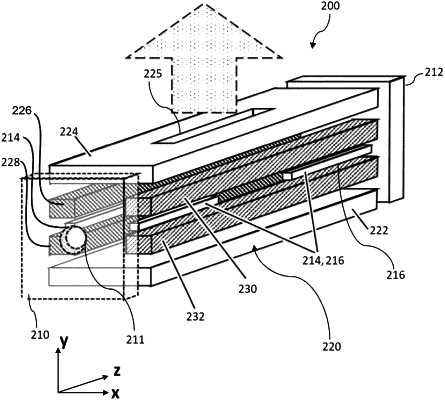| CPC H01J 49/4255 (2013.01) [H01J 29/84 (2013.01); H01J 49/4295 (2013.01); H01J 49/4245 (2013.01)] | 20 Claims |

|
1. An ion trap for cooling ions of a first polarity for mass spectrometry comprising:
a pull electrode having an aperture therethrough and a push electrode spaced apart from the pull electrode;
a multipole electrode assembly disposed between the pull electrode and the push electrode and configured to confine ions of the first polarity to an ion channel extending in an axial direction of the multipole electrode assembly; wherein the push electrode and pull electrode are spaced apart in a direction transverse to the axial direction;
a first confining electrode provided adjacent to the multipole electrode assembly and extending in the axial direction of the multipole electrode assembly; and
a second confining electrode provided adjacent to the multipole electrode assembly and extending in the axial direction of the multipole electrode assembly aligned with the first confining electrode,
wherein the first and second confining electrodes are spaced apart in the axial direction said spacing apart defining an ion confining region of the ion channel between the first and second confining electrodes,
wherein the first and second confining electrodes are configured to receive a DC potential of the first polarity to further confine ions within the ion channel in the ion confining region, and
wherein the aperture of the pull electrode is aligned with the ion confining region such that ions are ejected from the ion trap upon application of a push DC potential to the push electrode and a pull DC potential to the pull electrode.
|